I just took some time off to celebrate an event which acknowledges that I’ve officially grown a year older, even though I’m constantly growing a day older every day but that doesn’t count until it totals a year. To celebrate the year, I would like to offer a present to my readers, which are recipes of my favorite food in the world, the various different kinds of noodles in Thai cuisine.
I’ve actually been wanting to write about this for a long time, but I chose to write about curries first before the non-Thais out there ruined my country’s heritage even further with their know-it-all (that really should be called “don’t know a thing”) attitude. I’m about 80% through with my curry paste recipes, so now I can start a new subject.
I love all kinds of noodles and I could live on noodles for months before I even thought about rice. Thai noodle are something you would consider as a “one plate food”, or อาหารจานเดียว, because you don’t need multiple dishes to have a meal, as you would with rice. You get all the food groups together in one bowl.
Are you thinking this is starting to look like a series?
You’re correct. If you’ve ever been in Thailand and walked the streets, you would have seen noodle vendors on almost every corner. If not, then there would have been many vendors bunched together on one corner. They’re all selling noodles, but all different kinds.
So that’s why this is becoming a series on its own. You will get recipes for several different kind of noodles, almost like you’re walking the streets of Bangkok. I can’t guarantee that you will get every kind, but you are going to get as many as I know and love to eat.
And by the way, I’m not completely done with the curry pastes or the omelets. You will see them pop up here from time to time. I am a true gemini; I can’t be satisfied with just one of anything. You get to experience how confusing life with a gemini can be without having to be married to one, like my poor husbanditor!
Before we even begin, I need to prep you first because we have our shared ingredients that are found in every kind of noodles, and then there will be the different ingredients in each kind.
Wait…I almost missed one step due to my excitement writing about my favorite food of all time..the history! (Yeah, yeah, yeah, you can skip the next six paragraphs then, if you don’t care.)
I’ll start with what we say noodles in Thai. We call them “Guay Tiew”, ก๋วยเตี๋ยว. All noodle names start with guay tiew, such as guay tiew moo = noodles with pork, guay tiew neua = noodles with beef, guay tiew tai = noodles with chicken and so forth. The words are from the Teochew Chinese word 粿條/粿条 pronounced “guotiao”, meaning cooked rice strips.
Guay Tiew arrived in Thailand probably since King Narai Maharat or King Ramathibodi III of the Ayutthaya Kingdom from 1656 -1688. Ayutthaya was the former capital city of Thailand before Bangkok. King Naria was the most famous Ayutthayan King, and he allowed trading among several international merchants. He opened the population’s eyes to the existence of other countries overseas and accepted their cultures, including food cultures.
However, there is no written evidence regarding the penetration of the most important food culture to Thailand (and to me), the noodles invasion. It could be hidden somewhere in those dusty documents in the “control room” of the Thai National Library but I have not come across one yet. I need to take Claratin and go back there someday to do more research.
The written evidence of the second noodle invasion happened during the King Taksin era, in 1734 – 1782. Thon Buri, the capital city in his era, was on the right (West) bank of the Chao Phraya River and was combined as a part of Bangkok during the current era, the Rattanakosin Kingdom. During his time, just as in the King Narai era, Thailand traded with several foreign merchants who brought their own food cultures to the Thai people.
Guay Tiew is the simple dish that Chinese people cook and eat in their boats. You boil noodles, the meat of your choice and vegetables, you put them in a bowl, add broth in the bowl together with seasonings, then you are done, ready to eat. This is a dish eaten with chopsticks, not the fork and spoon of the typical Thai etiquette.
Of course, the Thai adopted the dish but they twisted it to fit their palate. So, the noodle dishes these days are quite different than the guay tiew of the old time. If you ever paid attention to the noodle dishes you saw in each country, you would have observed that they each have their own character. You can also tell the origin of that particular noodles dish by the ingredients.
We’re now going to discuss the character of said Thai noodles. Are you ready?
1) The leading characters, The Noodles.
The first thing we need to talk about is the noodles themselves. We can’t talk about the plays without talking about the lead characters, right? The noodles that are popular in Thailand are rice noodles and wheat noodles. I can tell you the four staples noodles that we eat, but it’s really not limited to just four. I will introduce you to the rest as I expand the Noodles series.
1.1) Sen Yai (Sen=line or noodles, Yai=big), the big fat rice noodles that the Cantonese Chinese called ho fun, or shahe fen in Mandarin Chinese.
These are the noodles made with rice and tapioca flour. They have been mixed with water, then steamed to cook and greased with oil to prevent sticking to each other while they stack them like this before they are packed in a bag and sold to you at the Asian market.
What do you need to do? Of course, separating them is a must.
You will have to peel them apart, which is not difficult, before you use them, or else you will get the whole stack stuck to together, which is not pleasant to eat.
This is the same noodle I used for Pad See Ew, Pad Kee Mao, the drunken noodles, and in the future I will give you more recipes that use these noodles: Guay Tiew Rad Nah – the rice noodles with meat, chinese broccoli and gravy sauce, Guay Tiew Neau Sub – noodles with ground beef and curry powder, Cha Guay Tiew – noodles stir fried with many ingredients Singapore and Malaysian style, Guay Tiew Kua Gai – noodles stir-fried with chicken, and much more.
Do I need to tell you that this is my favorite type of noodle?
How do you buy and store Guay Tiew Sen Yai?
Fresh noodles are recommended. You can buy them at any Asian market.
You can store them outside the refrigerator for a day or two and after that you have to store them in the fridge to keep them another week or longer. The noodles will turn in to a hard brick once you put them in the fridge. You’ll need to pop them in the microwave for a minute or two or steam them again for another 5 minutes to soften them up before peeling them apart. If you don’t warm them up you’ll end up breaking them in pieces. Not good.
You can also buy the dry ones, too. I don’t use them at all because I can always find the fresh ones. The dry ones need to be soaked in water (room temp) for a while before they can be used.
I can also give you a recipe to make your own fresh noodles. If you care to know, ask me.
1.2) Sen Lek (Sen=noodles, Lek=small), the small rice noodles about the size of linguini. This kind is sometimes called Sen Chan or Guay Tiew Chantaburi, and also rice sticks.
These are also cooked rice noodles that have been dried partially before being packed in a bag for sale as fresh rice noodles. These noodles are more stretchy and chewy than Sen Yai. I used Sen Lek in my posts for Pad Thai and Sen Chan Pad Pu (Easy Pad Thai). You’ve probably seen them in Pho, the Vietnamese noodles soup too.
Sen Lek are also available both fresh and dried. I don’t object to the dried Sen Lek as much as dried Sen Yai because their quality and texture doesn’t deteriorate as much. You can buy dried Sen Lek if you can’t find fresh ones and just soak them in water before use. Where to buy Sen Lek? Same place as Sen Yai, an Asian market. This is the same brand and usually they store them in the fridge.
You should store these in the fridge. They can be stored up to a month or longer. Before use, just see if the noodles have some moldy spots. If you know you are not going to use them for a long time, you can dry them out and store the dried Sen Lek outside the refrigerator.
1.3) Sen Mee, the rice vermicelli. This is a very, very thin rice noodle that makes angels feel like their hair is too rough and coarse. They are so fine and the texture is so delicate. These are the noodles that I use to make Mee Krob and Mee Kra Ti (Those are two very popular Thai dishes among foreigners. Please remind me to share those recipes here in the future in case I forget).
These are also called Mee Hoon or Bi Hun in Malaysia, Singapore and Indonesia. I think in Hong Kong they call this type of vermicelli Singapore noodles. (Please advise if I’m wrong here. I’m not so sure about it since I don’t speak Chinese.)
They are white, fine and delicious. This type is not my favorite, but that’s just me. My sister loves Sen Mee so much. Sen Mee don’t come fresh, but always in a dried form. I like the brand Wai Wai the best because I’ve eaten this brand since I was a kid. Noooooo, not because the manufacturing company just happens to belong to my friend’s family, not at all…(I can’t be lying through my teeth when I didn’t “say” the words past my teeth, I typed them).
I really am telling you the brand I prefer. (Again if they’re weren’t good, they wouldn’t be able to sell Sen Mee all over the country and all over Asia, right?) I BUY my Sen Mee from the store, too; No one gives them to me for free or anything.
Anyhow, you have to soak the vermicelli in water before you use them.
1.4) Ba Mee, the egg wheat noodles. I am introducing the first wheat noodles here. Do not get confused between Sen Mee and Ba Mee. Ba Mee is the Chinese egg noodle, so they appear to be yellow, either by food coloring or by egg yolk. I gave you the recipe of fresh egg noodles here in the past, if you want to make the fresh ones.
If you don’t want to make them fresh, you can buy them from the Chinese market.
I also don’t like the dried ones because they seem to lose their stretchy and chewy properties once they’re dried.
These four are the staple noodles in the Thai noodles market. The rest of them here are not as popular, but since I’m going to write about all kind of noodles, I might as well list them all here.
1.5) Woon Sen, the cellophane noodles made from mung bean flour, are also another popular choice. I have a recipe for Yum Woon Sen, or cellophane noodle salad, here and in the near future I will have more recipes. You can use Woon Sen to make Pad Thai too. It’s delicious.
Cellophane noodles also don’t come in fresh form. They’re always dried and packed in a bag. You have to soak them in water before use.
1.6) Guay Jub, the rolled rice chips or rice flake sheets, is another rice noodle that is rolled together in a tight tube.
When you buy the noodles they look like chips, but once you boil them, they will get rolled in together. This type of noodles would be served with two types of soups in Thailand. One is a clear broth, and another one is a dark soup filled with Chinese spices.
I’ll show you photos of this type of noodles in cooked form when I get around to the recipe. 1.7) Giam Ee noodles, the rice pin noodles, are rice noodles that have a diameter about 1/4”, round, are short, about 2” long, with pointed tips on both ends.
This is really a unique noodle but you still see it at street vendors from time to time. It’s not as popular, but also not forgotten.
1.8) Mi Sua, the extremely thin salty wheat noodles, only eaten in the Southern part of Thailand. This type of noodle is made by pulling the dough and stretching it so, so super far until the dough comes out very thin and fine. This link is showing the picture of the factory who makes these noodles.
Think about how thin the Sen Mee are, and Misua are even thinner!
1.9) Kanom Jeen; I think I’ve mentioned all of the noodles that we use in Guay Tiew, but I don’t want to omit these rice noodles even though we don’t normally eat them in the category of Guay Tiew, but we make a specific sauce to eat them with. I gave you a few recipes already to eat with Kanom Jeen, Kanom Jeen Sao Nam, Kanom Jeen Nam Ya Tai. You will find that people eat green curry, Kaeng Khiao Wan, with Kanom Jeen as well, or even eat them with Som Tam, the green papaya salad.
All right, now I’ve really completed the noodles list. You now officially know the lead characters of Thai Noodles, Guay Tiew. In the next episode I will tell you more about Krueang Guay Tiew. Sorry, you have to put up with me for another episode before I even give you any recipes.

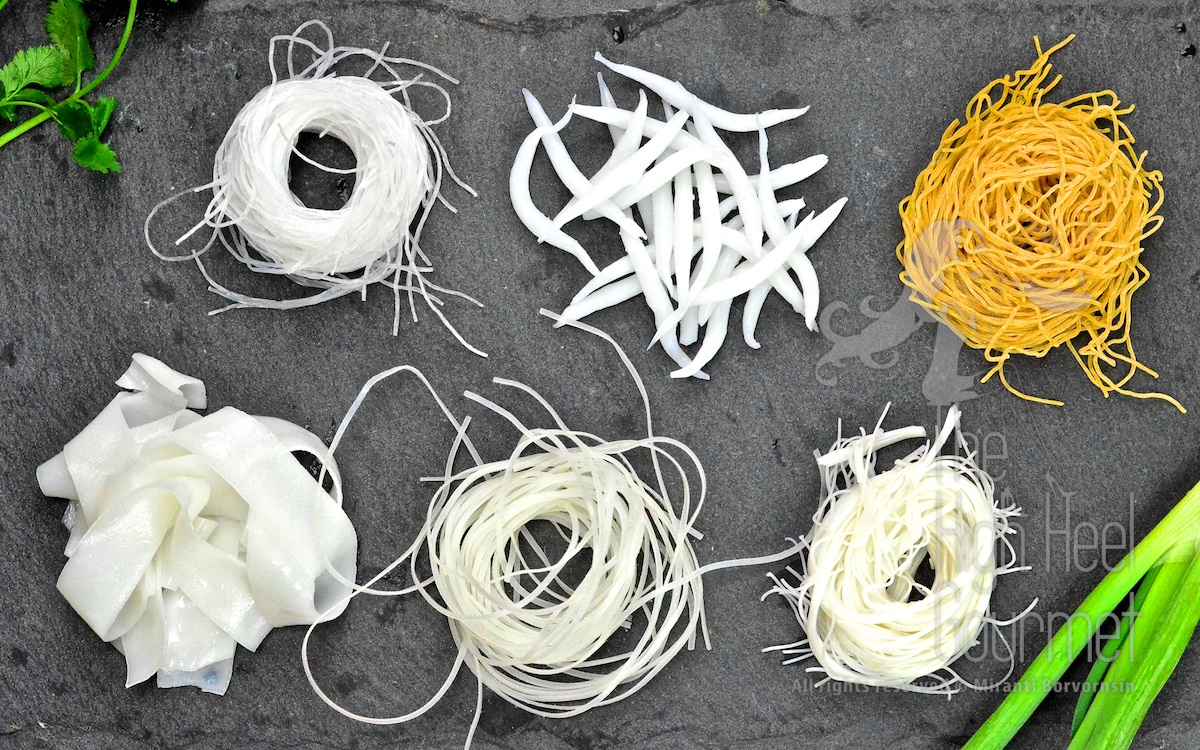
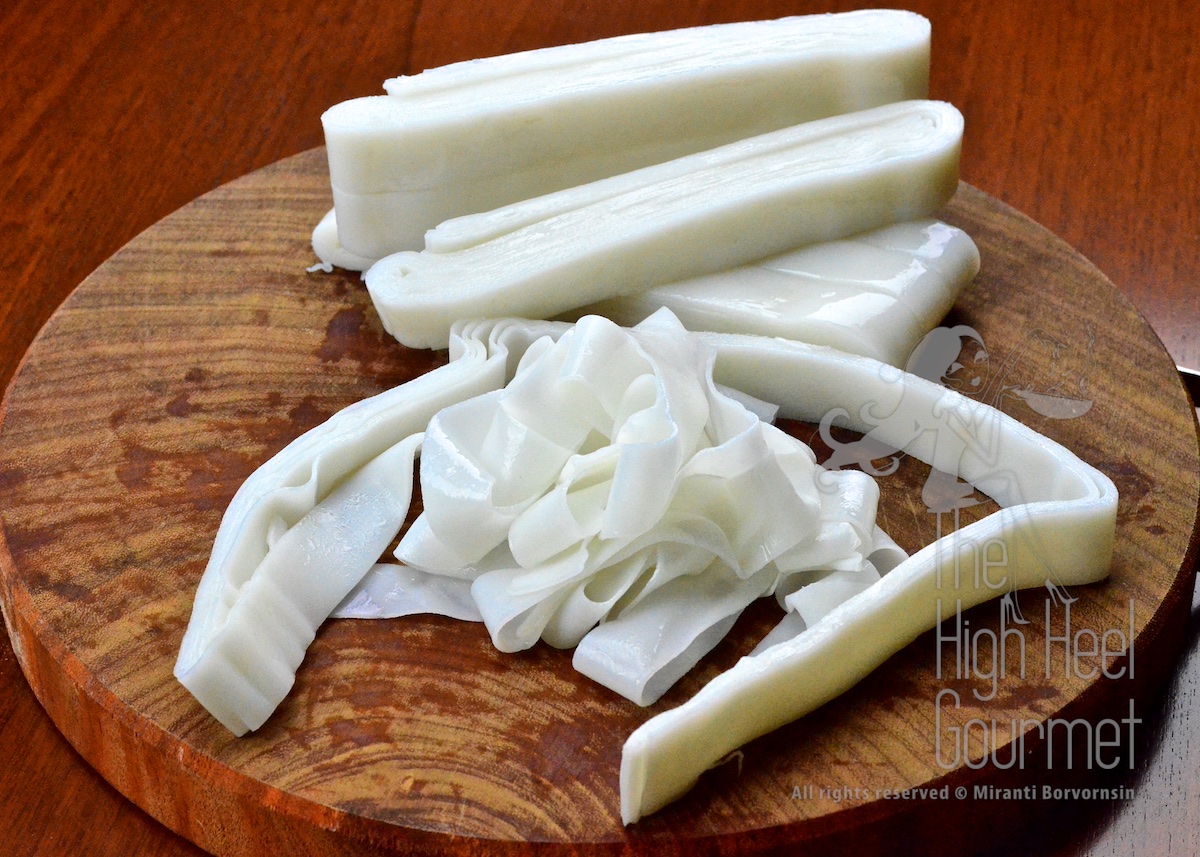
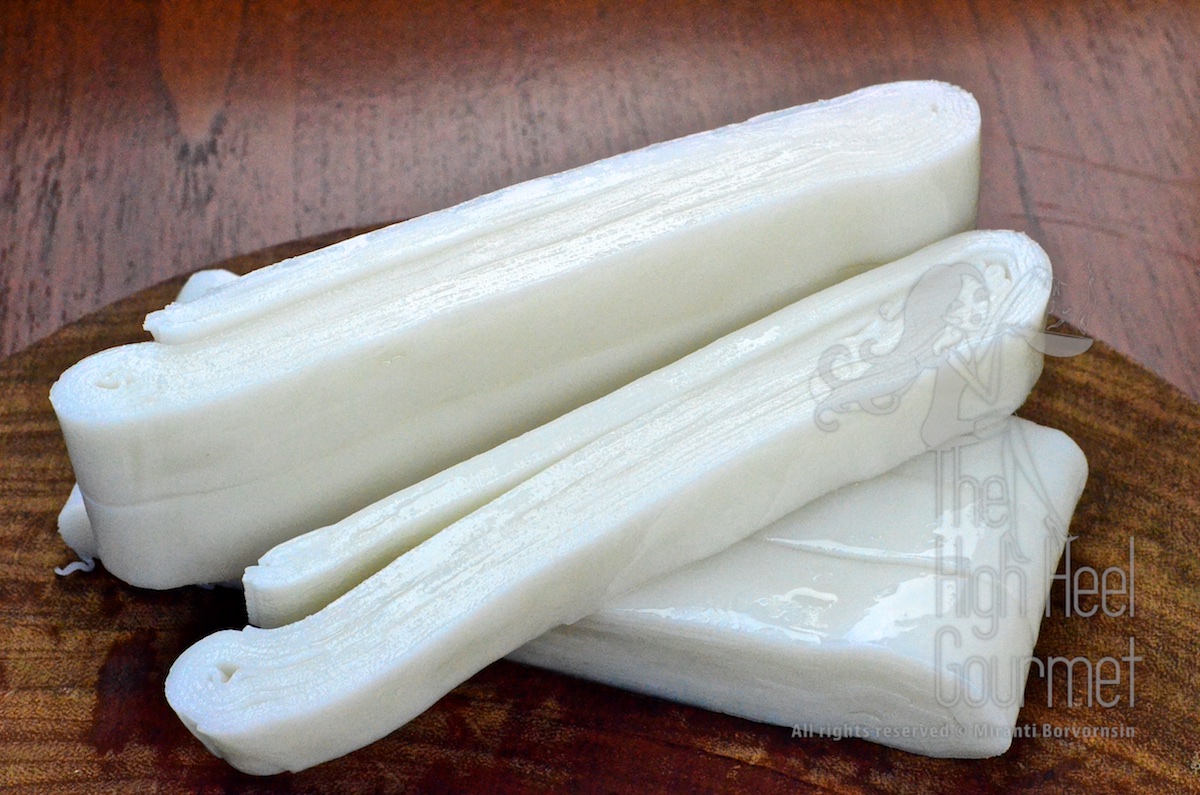
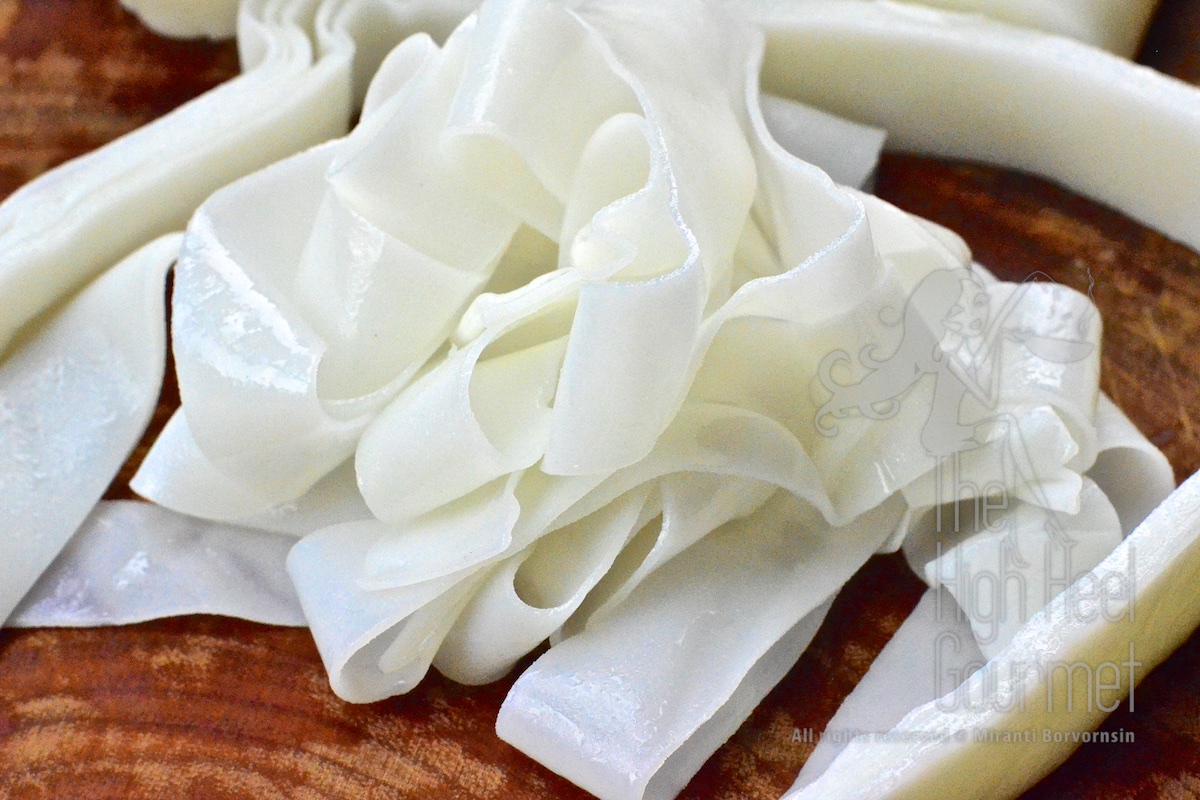
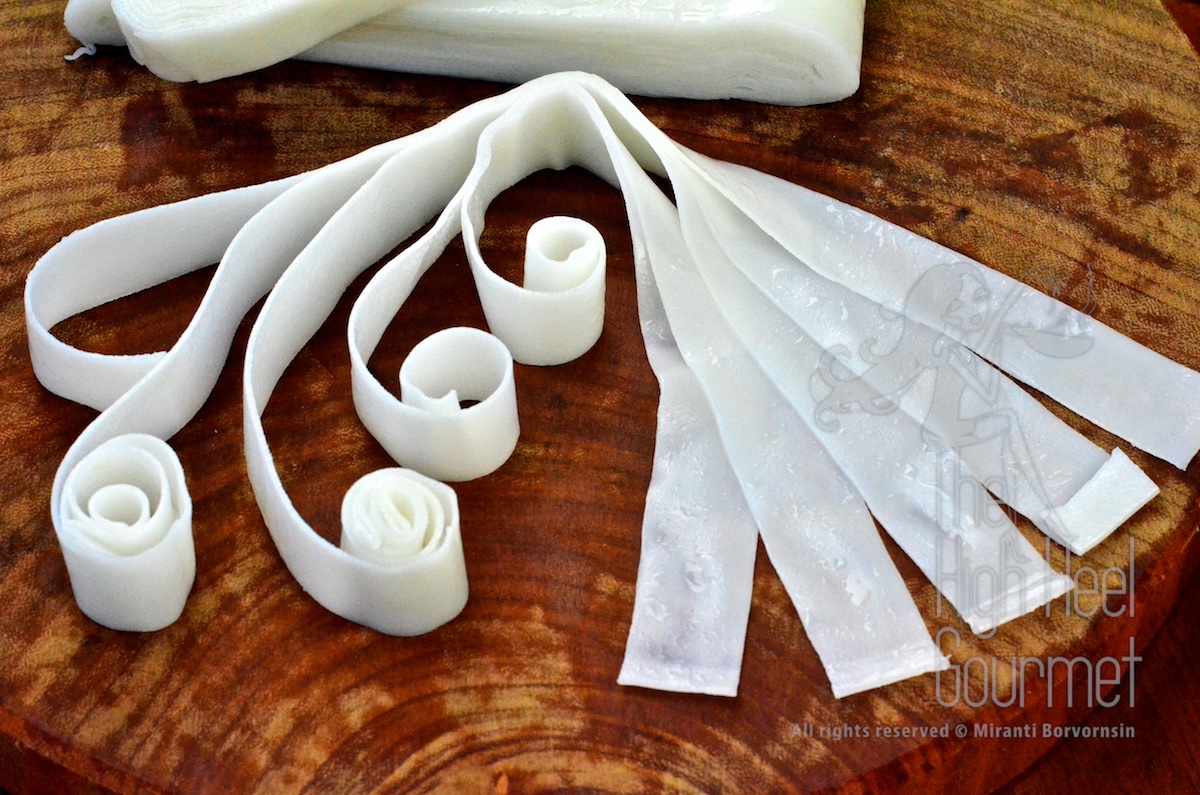
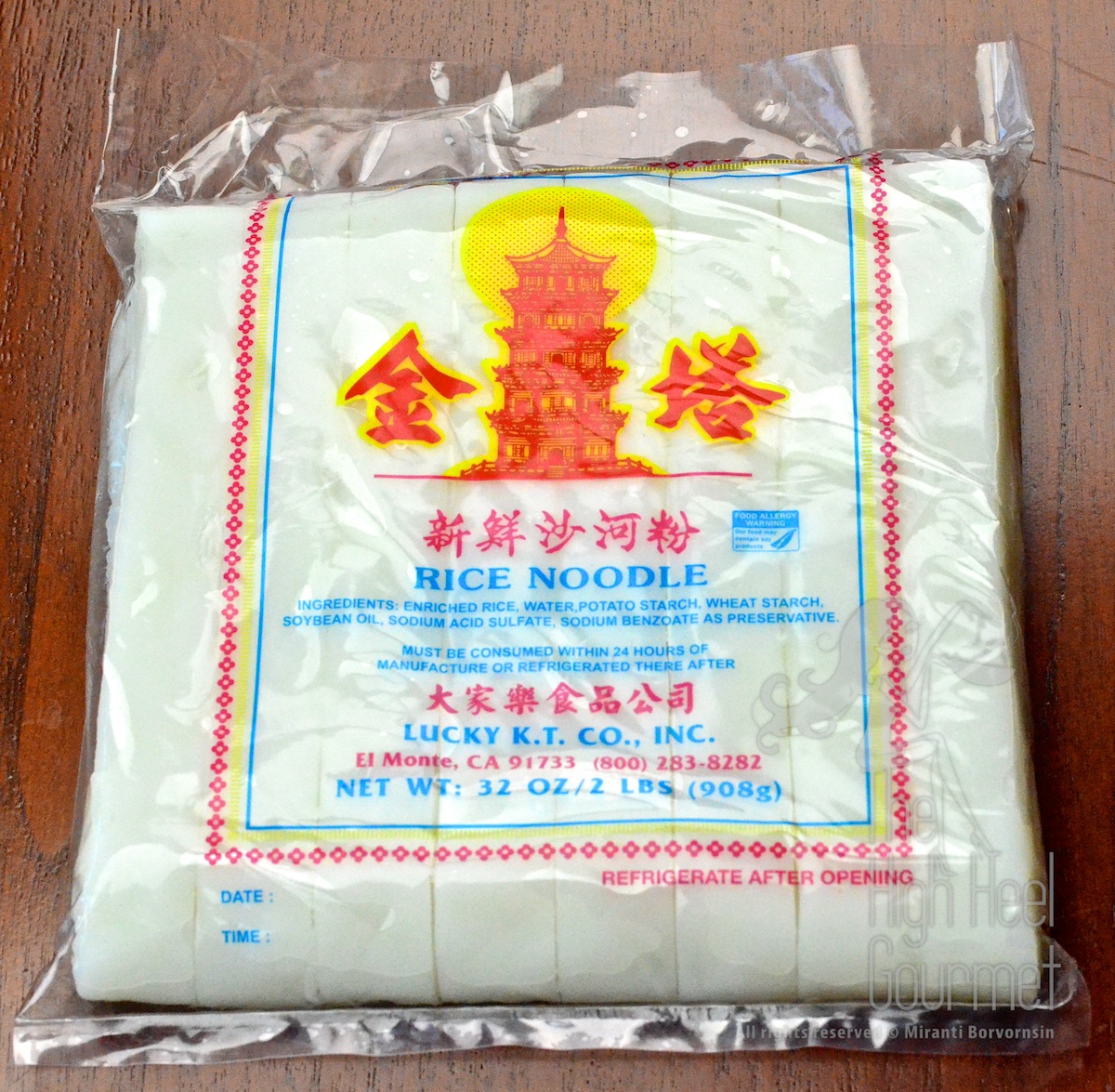
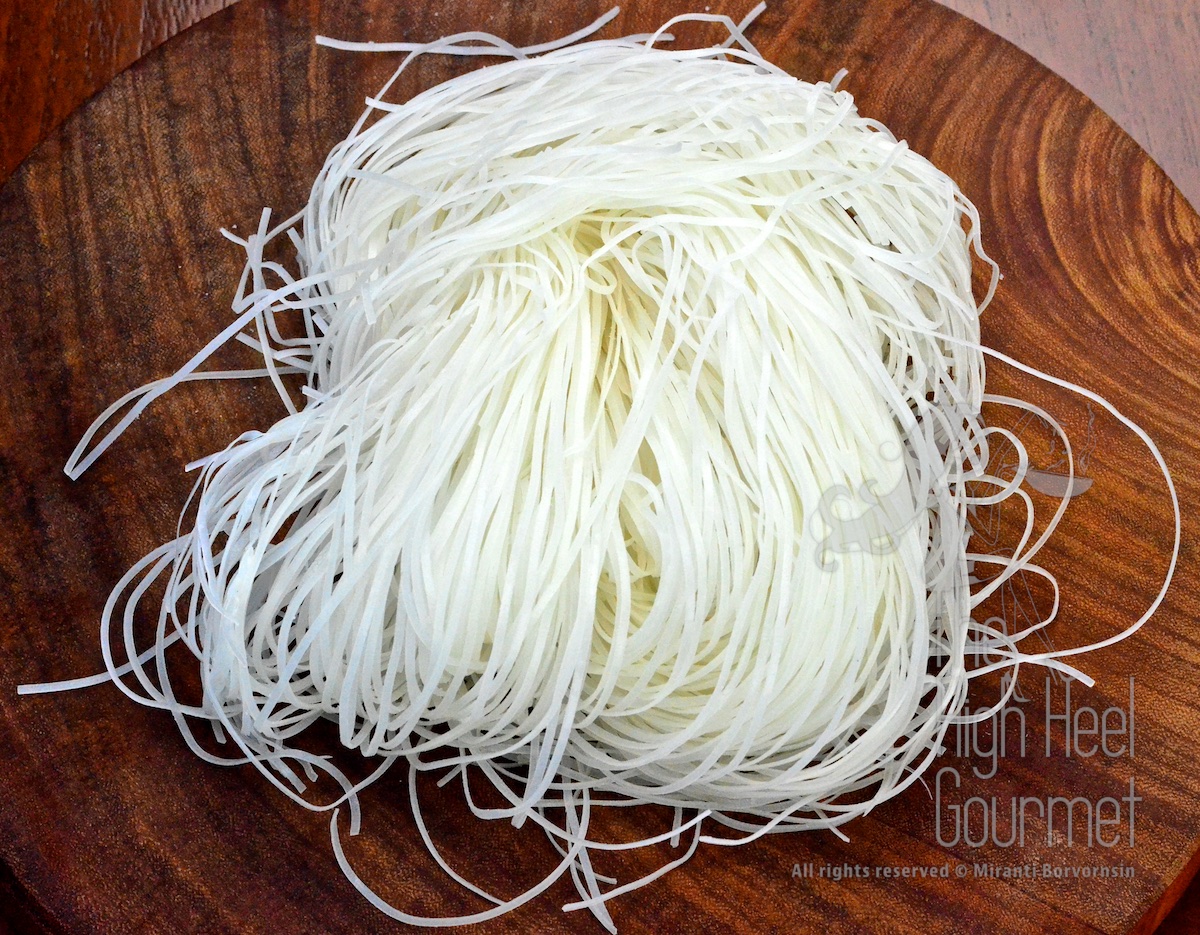
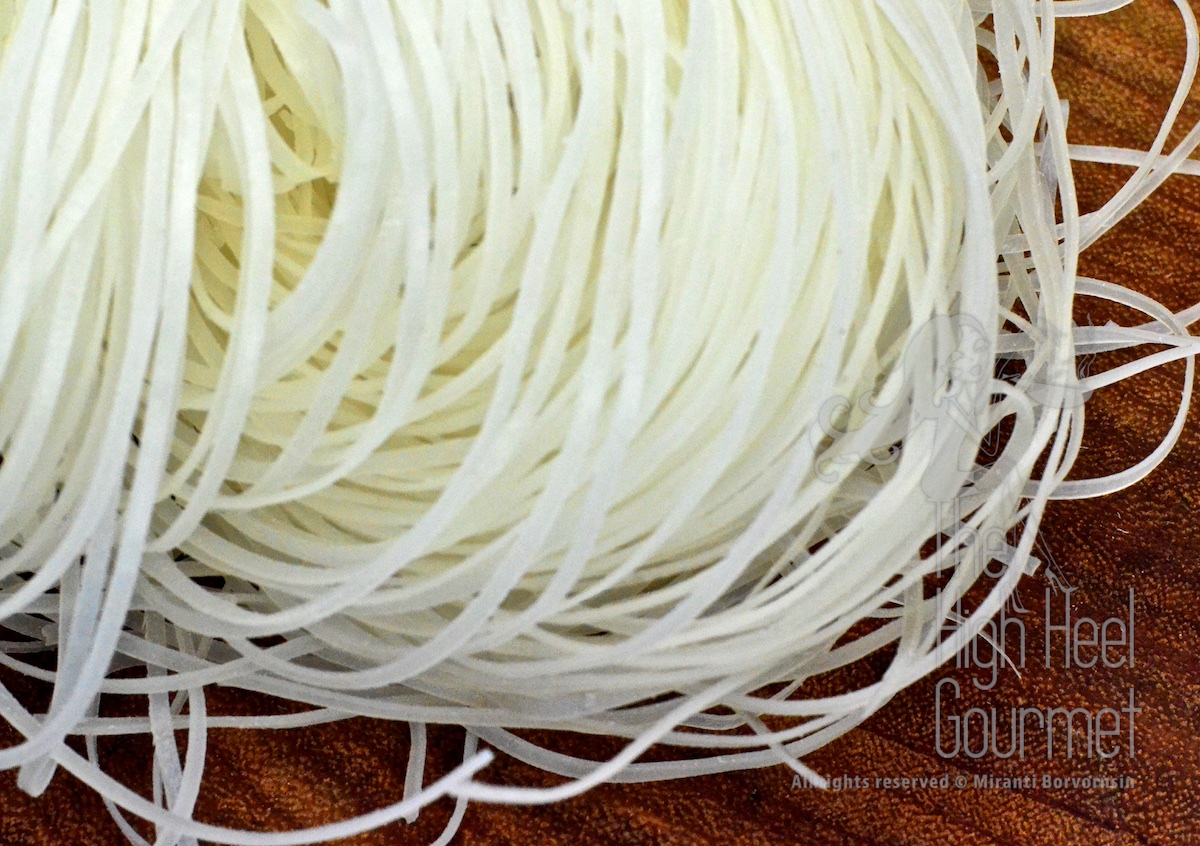
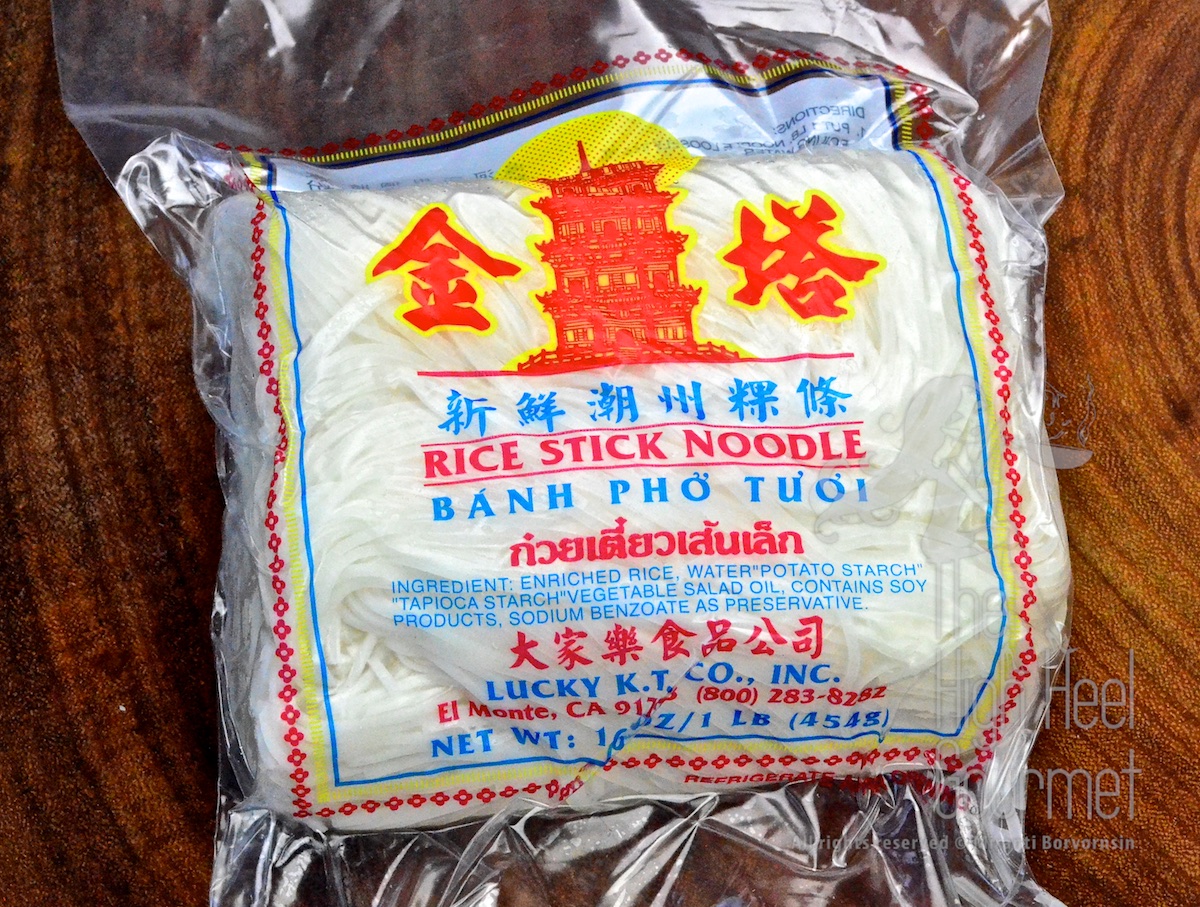
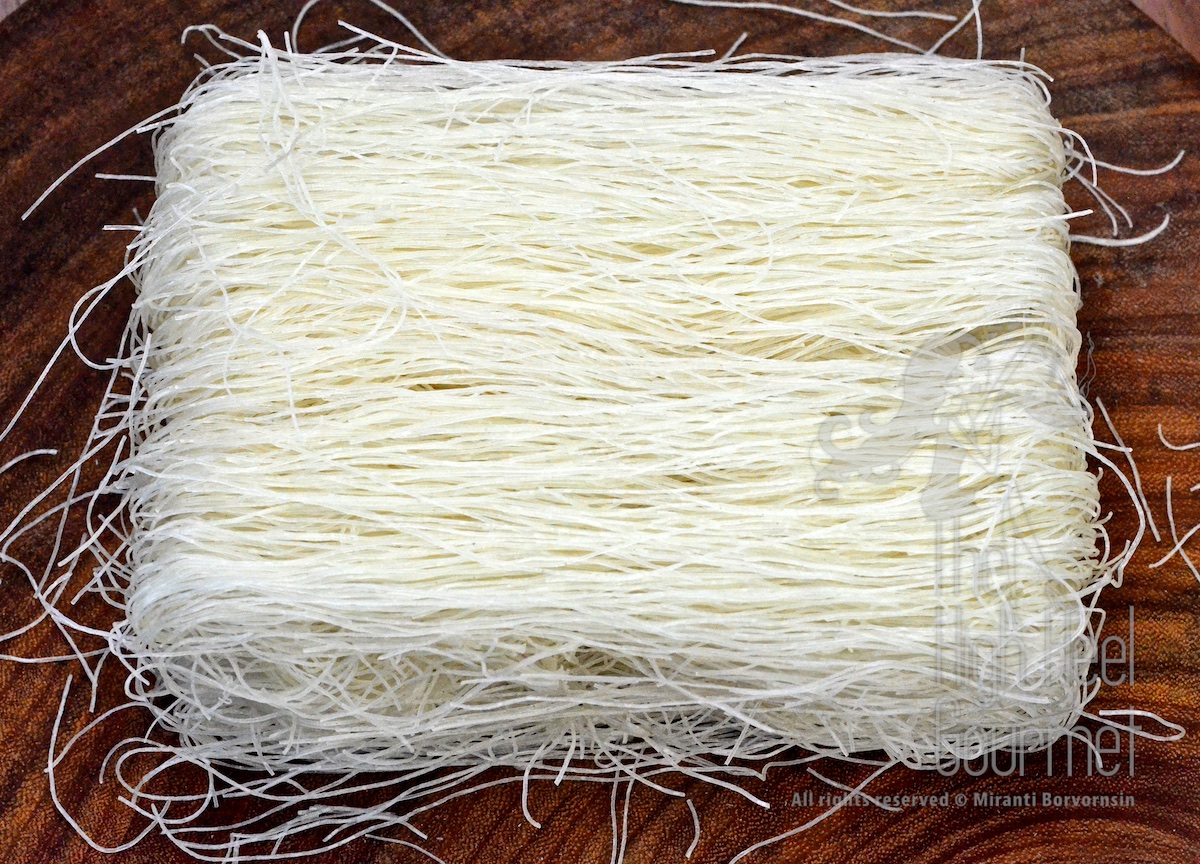
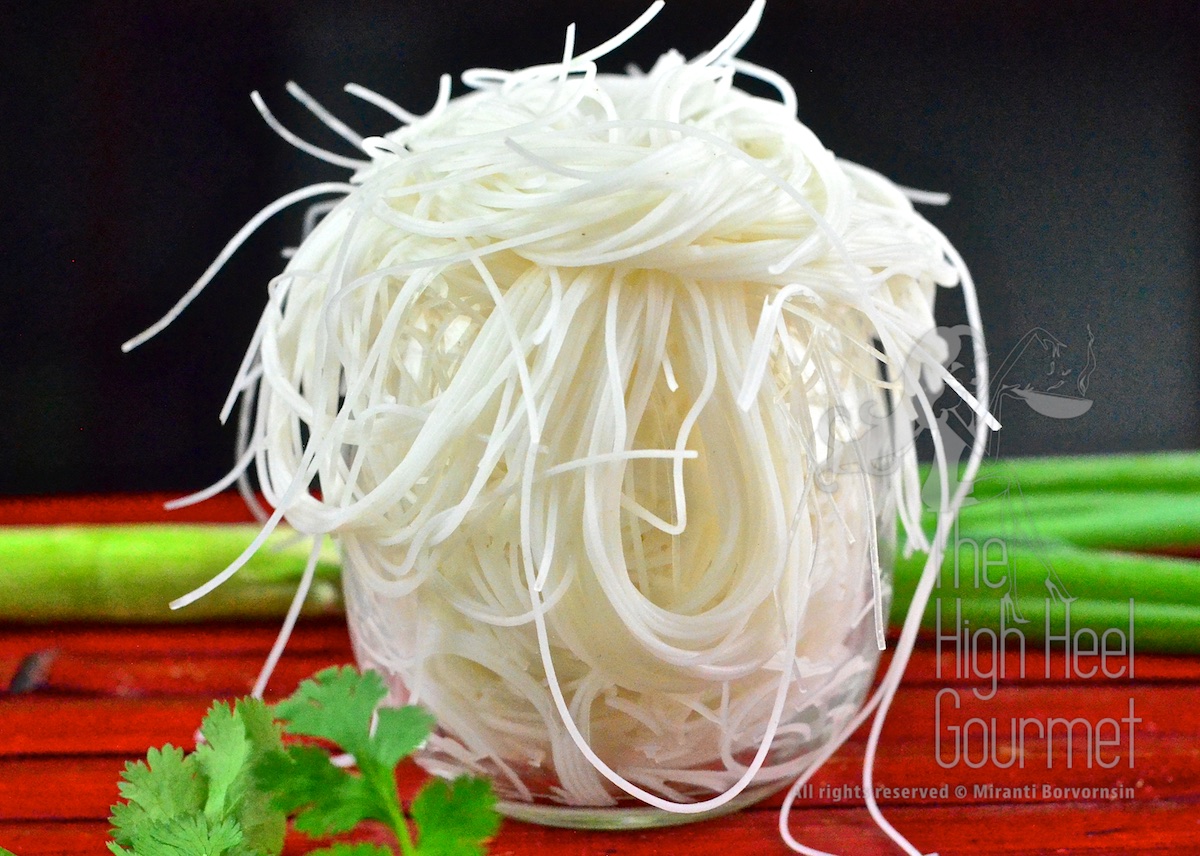
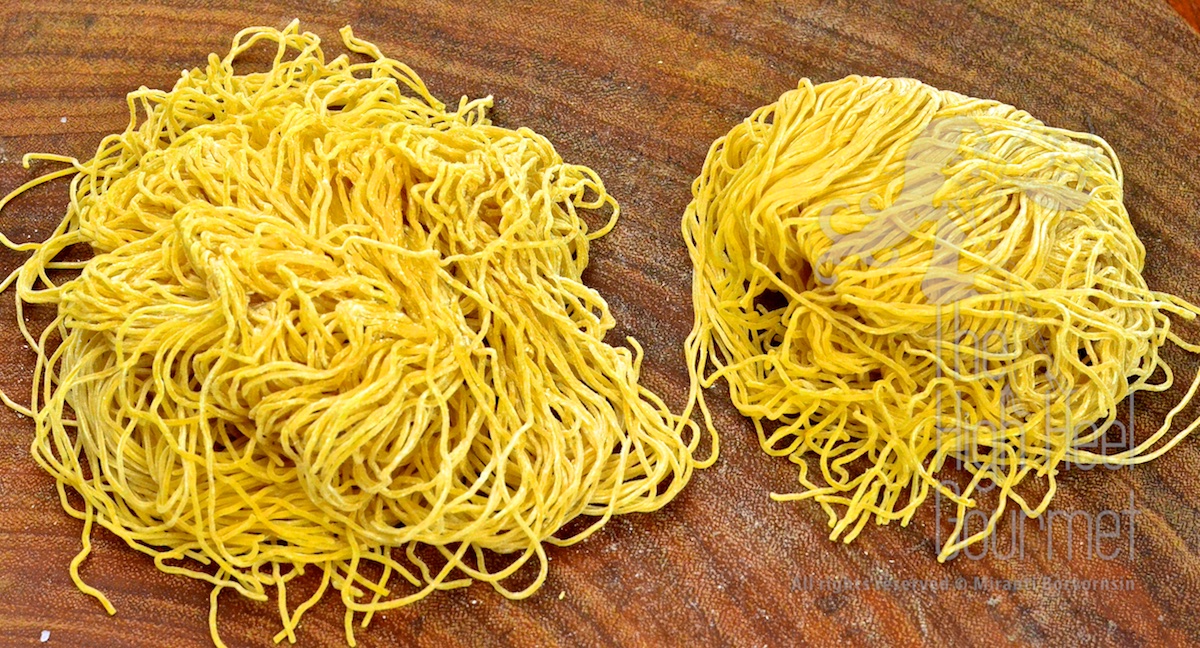
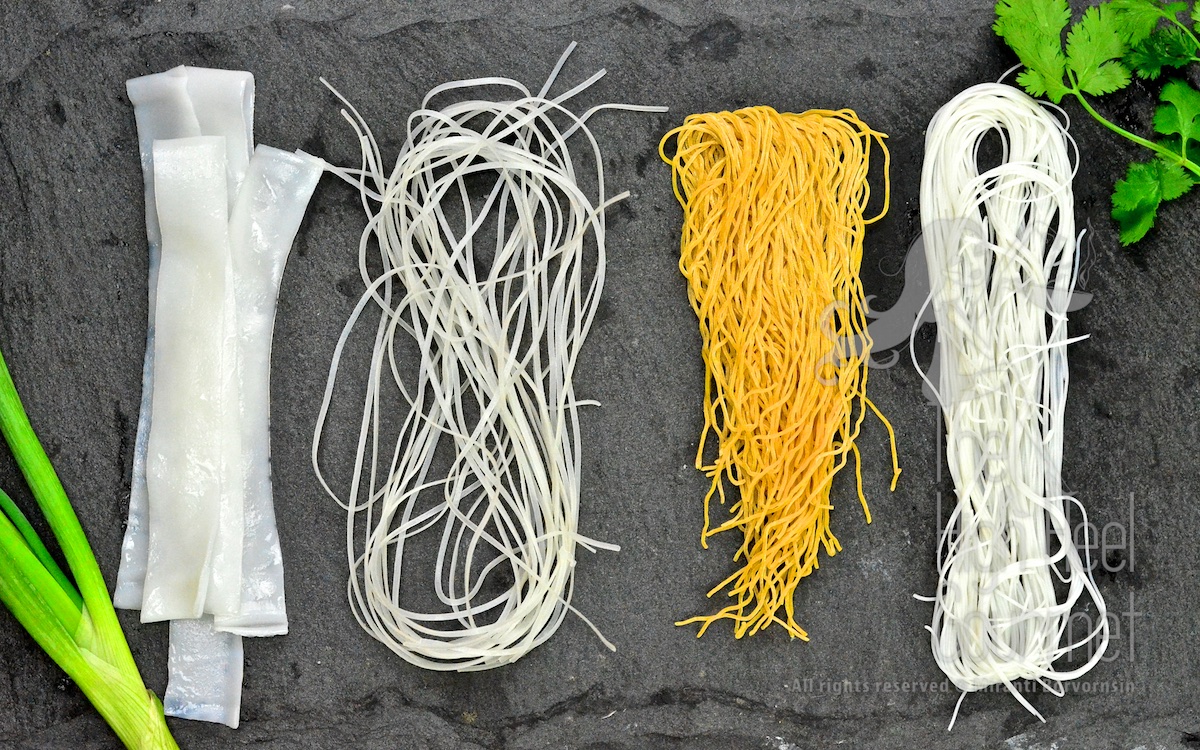
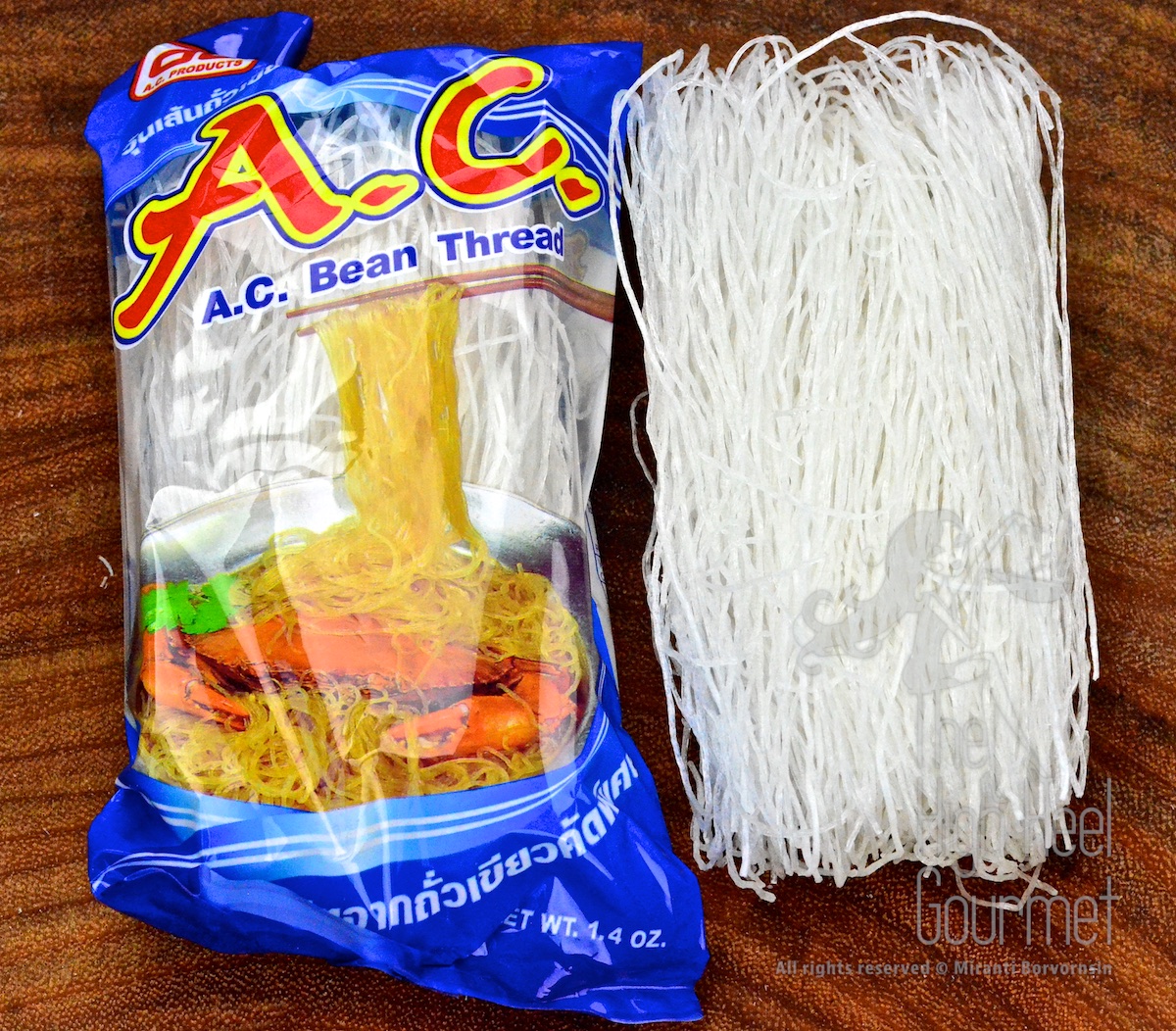
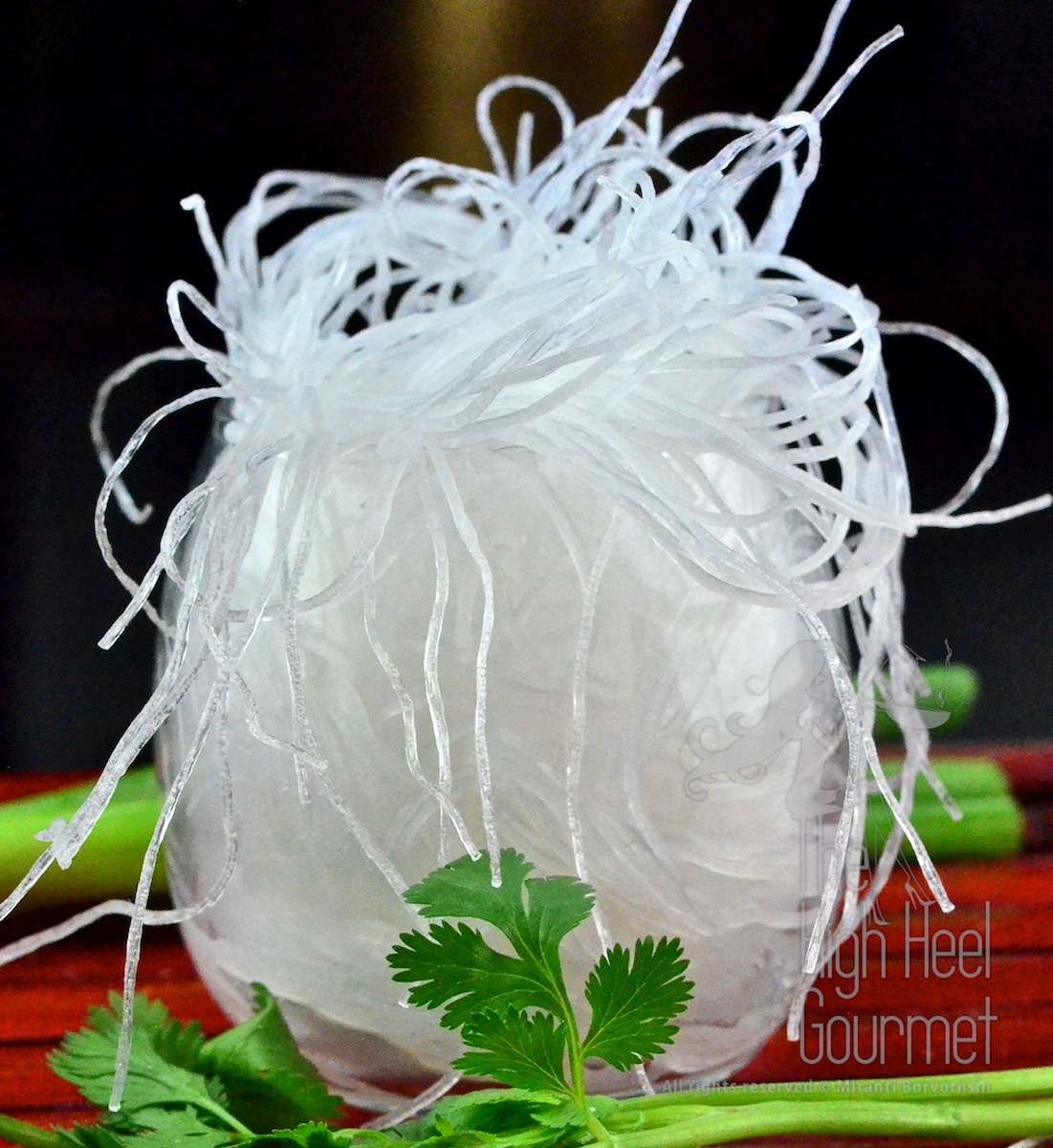
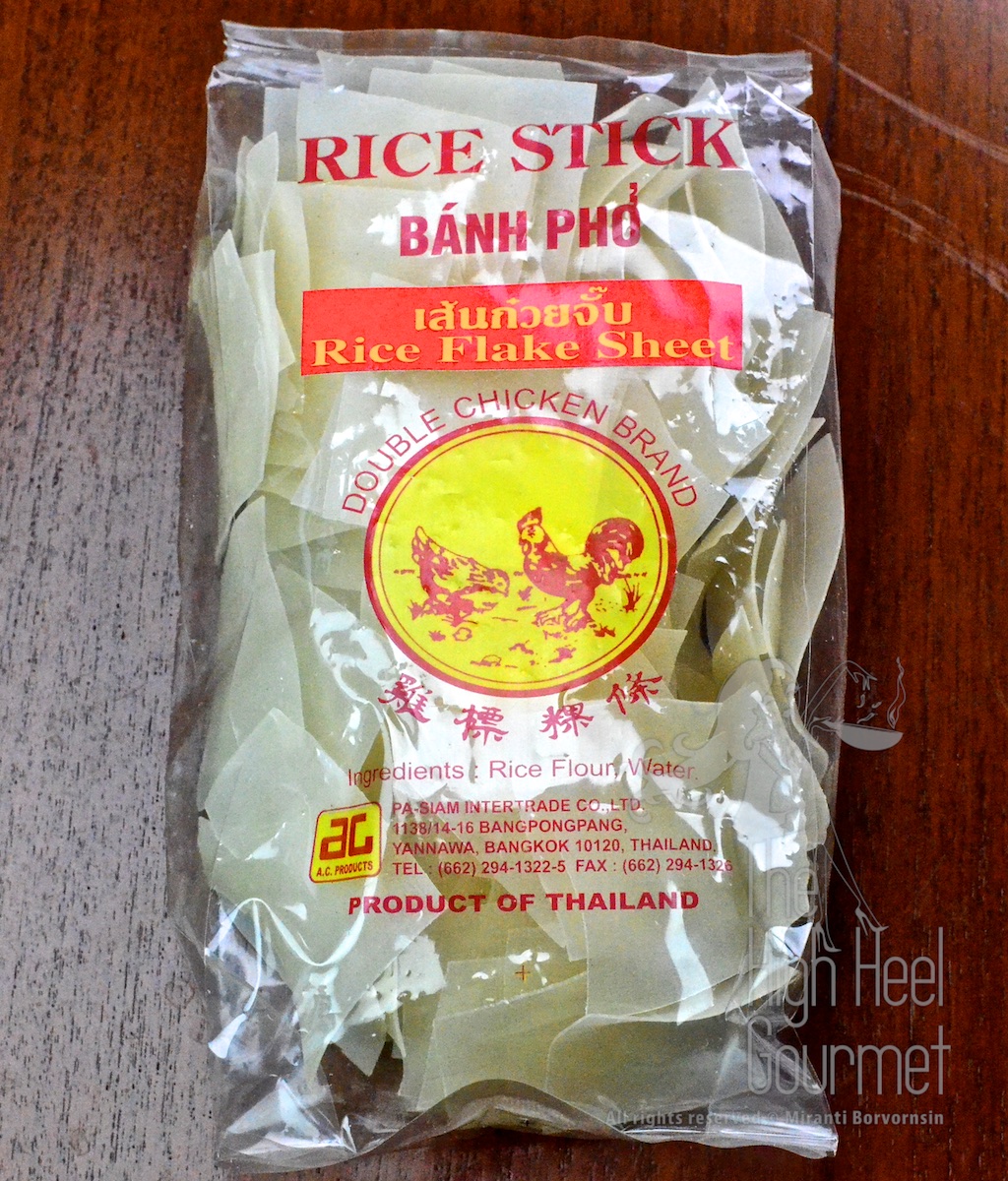
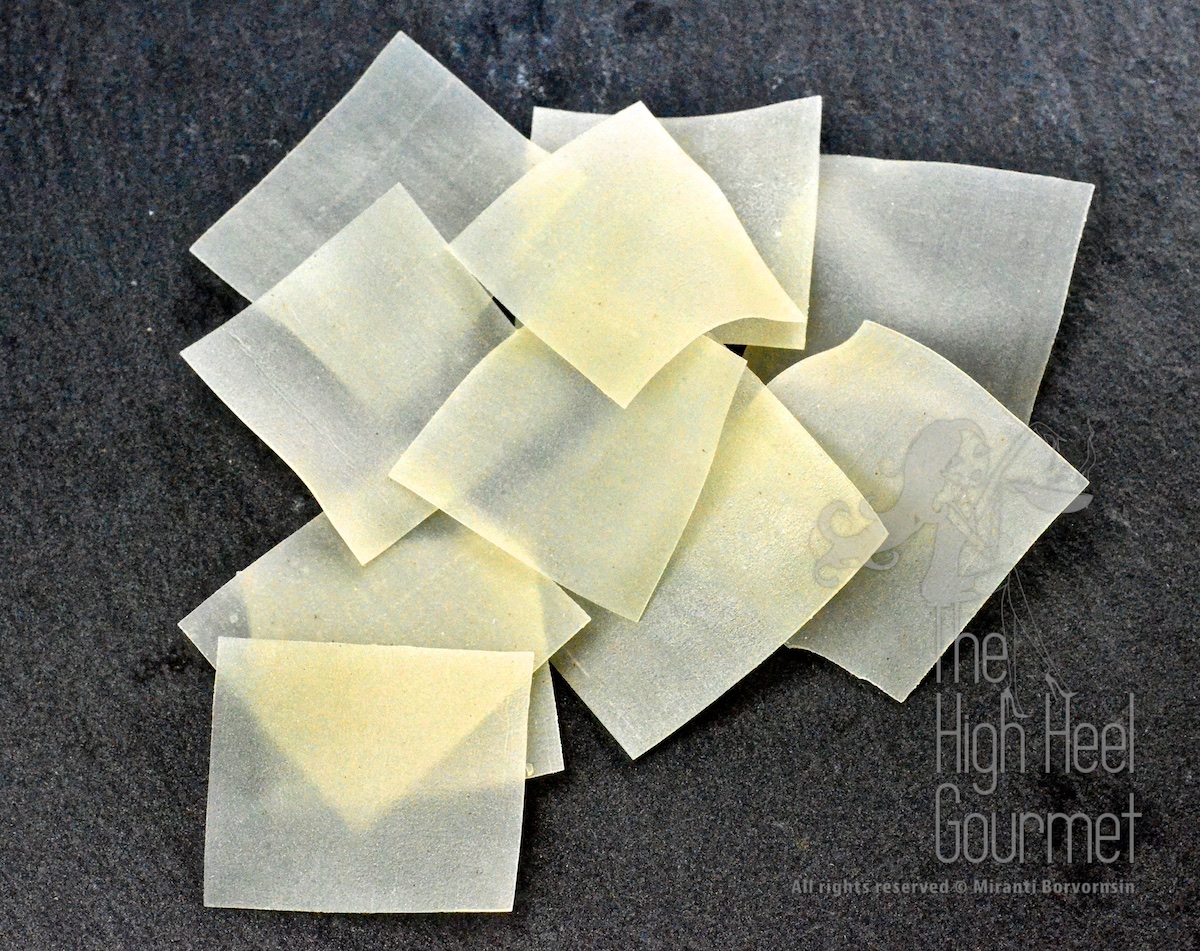
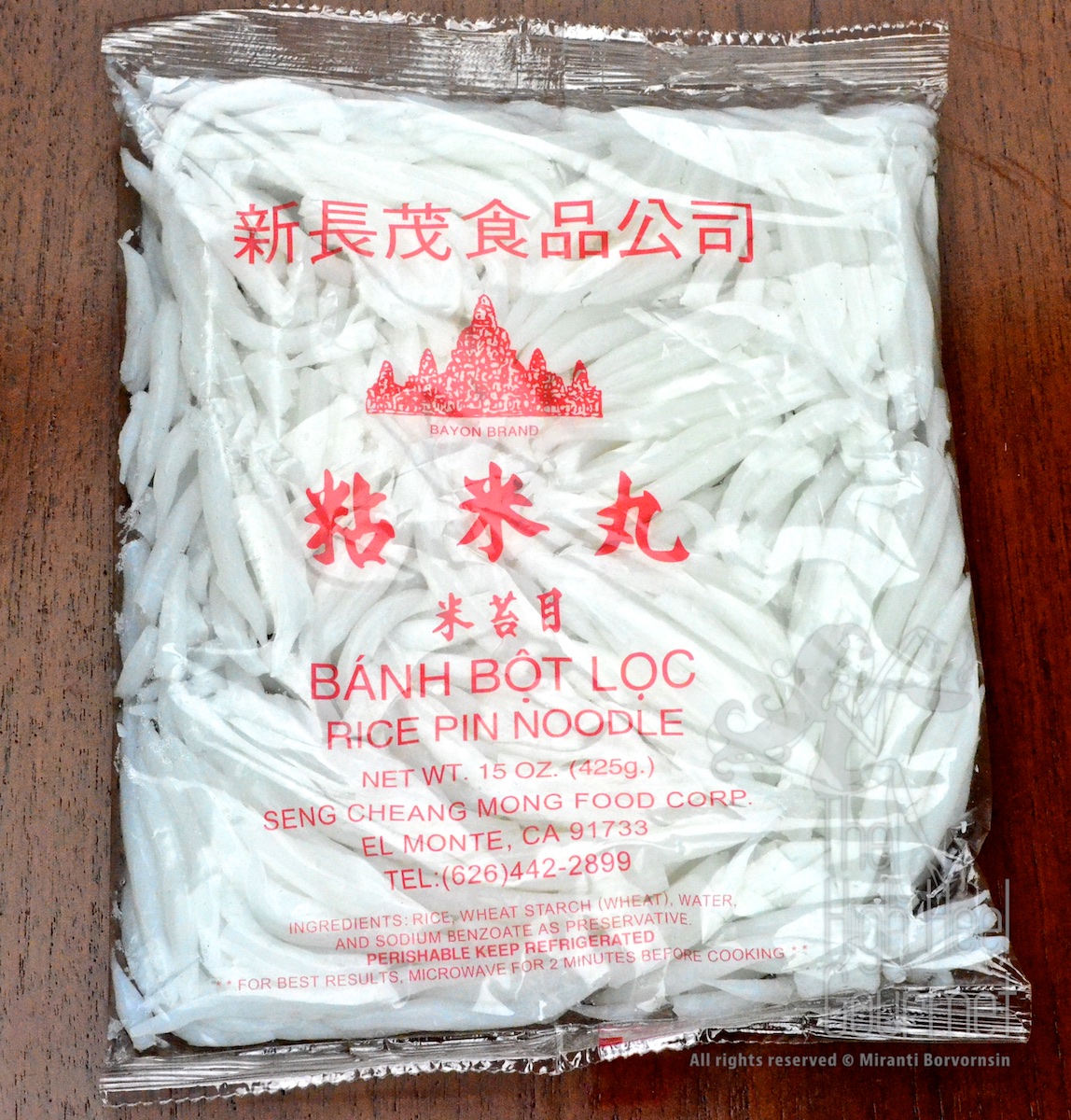
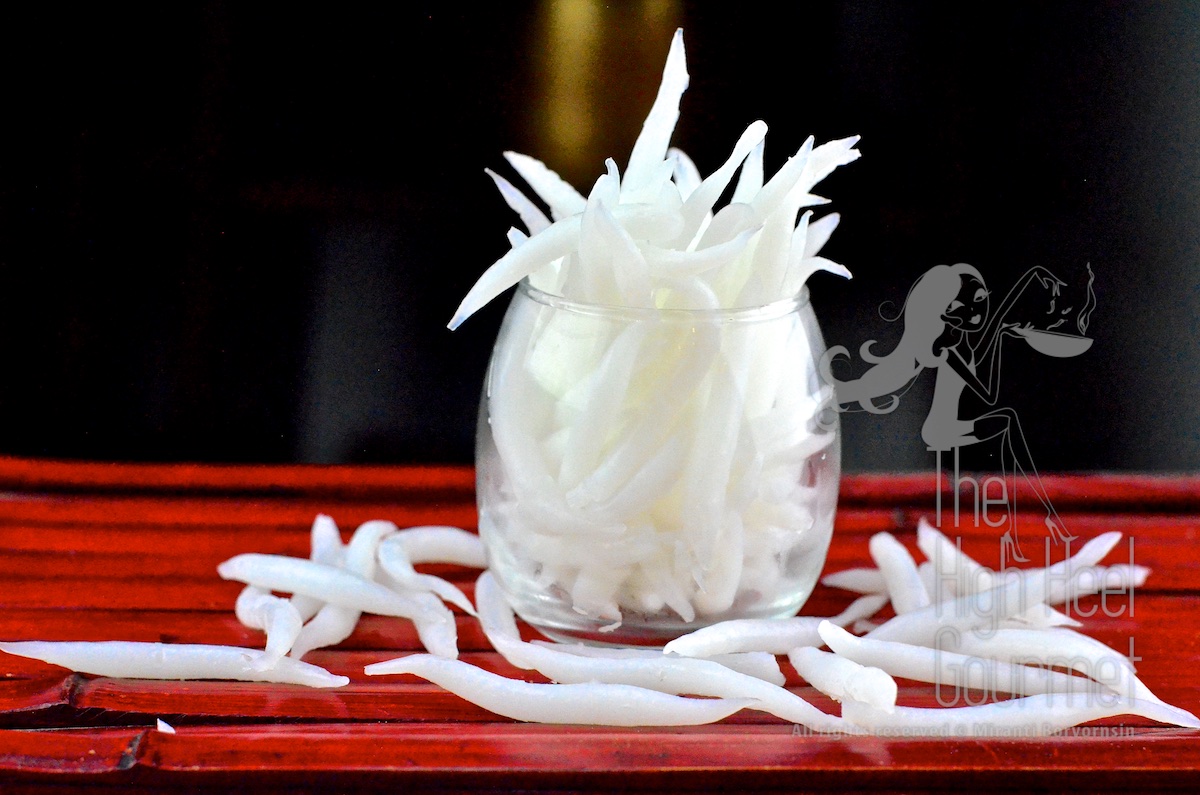
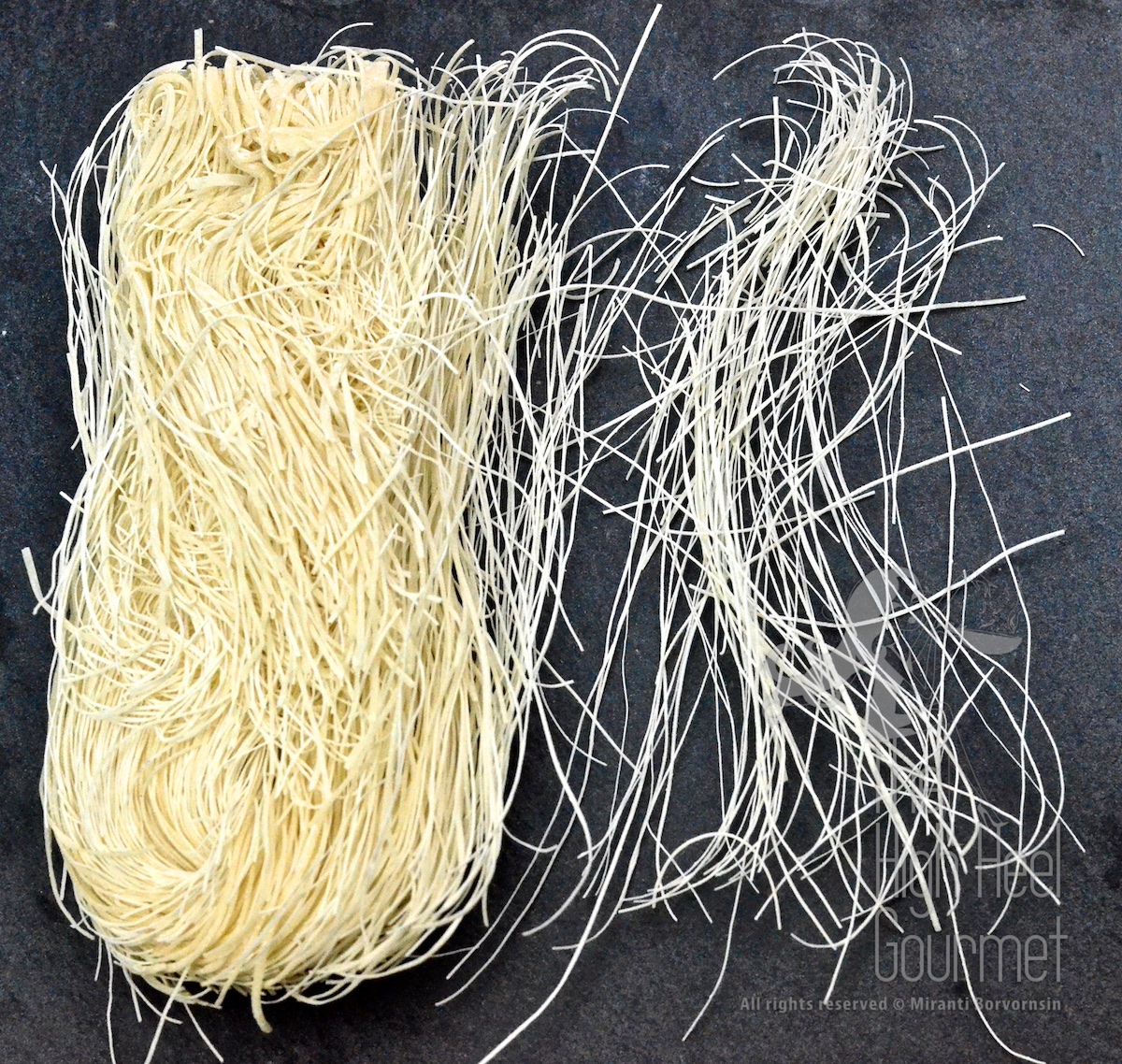
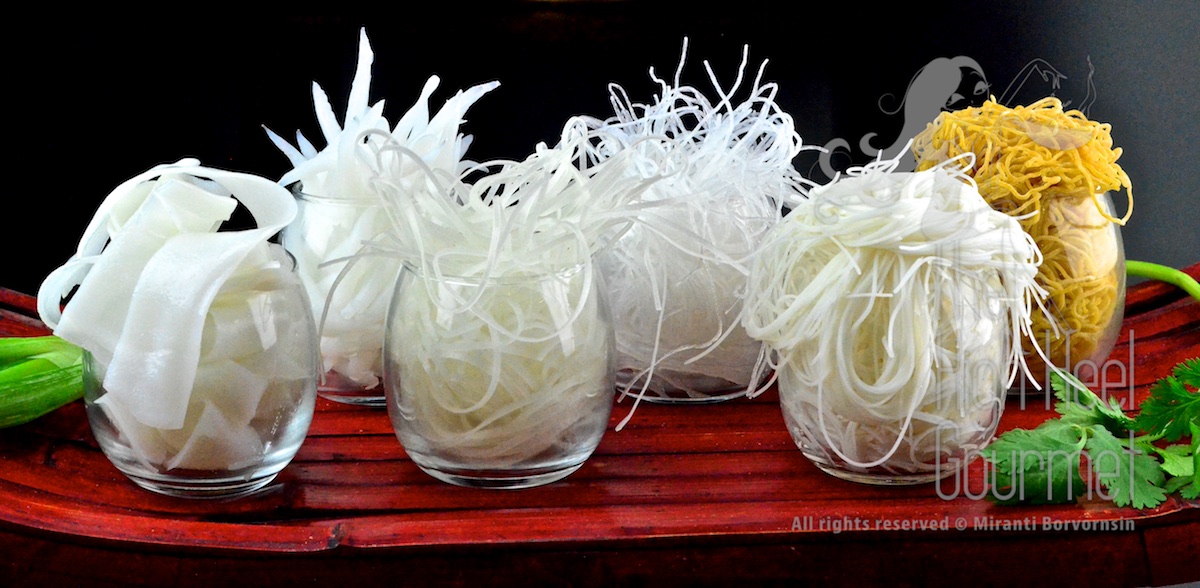
Great walkthrough Miranti. Belated Happy Birthday too.
Thanks 🙂
Fantastic post – I love noodles!! Thank you 🙂
You are welcome 🙂
Reblogged this on Egg in the Middle and commented:
What a great article. Teach me more!!!
Thanks 🙂
I love noodles. I could eat them every day. Now, I see I have some new ones to try!!!
Me too…I can live on noodles for a long, very very long time.
Reblogged this on The ObamaCrat™.
Thanks 🙂
So thorough and informative! Thank you! 🙂
You are very welcome.
OK, got the noodle thing. Waiting for the sauces or broth.
Yup the sauce and the first broth are up 😉
Again just a wonderful post. Interesting, informative, easily understood and again like always, the pictures are GREAT! Thanx for another fun read and who knows possible a new item in my meager set menus. dru
🙂 Thanks
wow! you are an artist! wonderful post!
Simi
Thanks…I’m really appreciate the compliment!
-mira-
A lot of these noodles we use in Chinese cooking! Awesome photos btw 🙂
I think the Chinese has many many more noodles. I still hasn’t study all of them yet. I just did the hand pulled not so long ago. I still don’t know how to make the shave noodles!
Great write up Miranti, did you see the post I wrote on my blog sometime ago on Noodles?? I actually dedicated it to you. I hope you had a wonderful birthday recently. Sorry I have not been on my blog for awhile, my studies have been very busy and full on this year. I hope that you are well? Best wishes from here in New Zealand 😀 🙂
I have so many house guests lately and didn’t have time to visit my favorite blogs (haha…I didn’t even visit my own blog often enough. I disappeared for the whole month in April!) I have to visit your blog soon.
I hope you are doing well with your study. (I remember my student time…so don’t want to go back to that EVER…hugging my diploma tight…haha)
Great to hear from you! I am really busy this year and I thought I would be able to manage to do a few reviews but alas its been hectic. My degree is going well and I hope to have it all finished by November. No probs about not seeing my post… it was quite a while back that I wrote it. Keep in touch 😀
No probs, drop me an email when you are free sometime. I love your blog and wish I had more time to read it too… my own one has taken the back seat lately. Study is going well but its tiring. I have two more papers to finish and then YIPPY I finally have my degree in Social Science. I cannot wait to get my teeth back into a good paying job again too as my little part time one gets me by and stuff but not enough to make it a permanent thing. Its been great while I study though 😉 Look forward to hearing from you soon.
Thanks for the awesome write up Miranti! I hope you had an amazing birthday! As I’ve said before, we don’t have any good asian markets around here and your recipe for Drunken Noodles is still calling my name! I hear we have a new market in town so I’m going to check them out. Hopefully I can find all the ingredients I need. Thanks again. My uncle will be home from Thailand in 2 weeks. I would like to dazzle him with my Thai cooking (thanks to you!)
Thanks 🙂
I am sure with your awesome skill, he would be pleased.
Thai noodles always seem intimidating. Thanks for the comprehensive tutorial.
Miranti, you make me laugh! I’m glad you’re the defender and teacher of Thai food! And that’s why I love your blog! This was a great post, and very informative. I’d love to get my hands on those first, fresh noodles. I’ve never ever seen them before!!! Thanks!
Chef Mimi, I’m serious about these! This is not a joke, alright.
(Did I get you by the first paragraph? 😉 heehee)
Thanks so much 🙂
If the fresh noodles are not that difficult to get, do it but if they are so far away don’t try. lol…they are addictive, you know. Once you have them, you want to only eat them that way….just a warning.
Good noodle guide, Miranti!
Reblogged this on prasitleokomin and commented:
…a great guide for noodle lovers everywhere!
Thanks 🙂
Thank you for this. I love noodles so much, I keep a stash in my freezer/cupboard and homemade fresh chicken broth and fried garlic in my fridge constantly so I can be ready.
I’ve never seen the rice pin noodles before!
Will you please share with us the recipe for fresh rice noodles?
Sorry it took me this long before I reply. I hope you are still interested.
Here the rice noodles recipe.
Rice flour 1 cup
(Do not use Bob’s Red Mill. You have to go to Asian market to get the Asian one. I guess that Bob’s Red Mill didn’t soak the rice before grinding them like the Asian one. The Asian rice flour, the rice would be soak, grind then dry.)
Tapioca flour 3 tablespoons
Water 1 1/2 cup
——————-
Vegetable oil
Mix all the flour with water, make sure there is no lump of flour left.
Rest the batter for 10 minutes
Set up the steamer, wait until the water is steaming before you start.
Brush the ceramic plate with oil put the batter on the plate. I used 8″x8″ tray and I pour about 1/4 cups of batter in the tray and steam for 2 minutes…Done…You go the noodles. Brush the top with more oil and continue to make some more and you stack them together. You can cut then to the preferred width.
Or you can try the microwave method. I used round plate 9″ round plate. Do the same prep, brush the plate with oil and put about 3 1/2 tablespoons of batter in the plate. put it in microwave 1:30 minute.
Dear Miranti,
I am so happy that I found your blogger.
Wonderful article and great sharing.
Thank you so much
Lynn
I have bought fresh rice noodles 2 times and both times I mess them up after I microwave them in the bag there perfect separating then isn’t easy lol but after I put them on a plate and prep dinner there stiff and when I oil the pan and add sauce there hard and a mess (stuck together) help???? I’m confused on what I’m doing wrong. I have also used dried form soaked them etc and I can cook with those but the texture is off 😔
Salina why do you put them in microwave before you separate them? Have you previously put them in the fridge before?
In your case, I think if you had already put them in the fridge, you microwave them too long. If you haven’t put them in the fridge before, you don’t need the microwave before you separate them. Without separating the noodles, you won’t get a good cook out of these noodles at all.
You can try separating them when they’re cold and let them break too. The other thing is the brand. If the one you have been using isn’t working, try a different brand.
The back of package says to microwave then. I have also tried without and failed. I will try a different brand thank you.
Weird instruction!
I would change the brand. If you squeeze the bag just lightly, you will feel that the noodles should be soft and not hard like a brick. Another good indicator is to lift the bag from the middle and see if the noodles curve downward. If the bag of noodles curves down, the noodles are really fresh. If the bag of noodles is bendable but not curve downward, the noodles are alright but it might already be a day old. Other than these, don’t buy.
Never have put them in the refrigerator
I just come across this & love it.
My favourite noodle is also the Sen Yai.
Could I please have the recipe?
I would love to try to make it myself.
The recipes are on this blog, go back to homepage and you can choose from the picture list.
This was lovely to read and just answered my question, on the spot.
I always eat the most delicious phat thai at the Peninsula hotel in Bangkok where I always stay and always wondered what the noodles were called. Now I know, sen yai noodles!
I couldnt hope to make phat thai as deliciously as this but the noodles always facinated me. Mysterious, slightly sticky translucent, moist and utterly designed to be easily picked up with a pair of chopsticks. I love the way the chilly flakes and crushed peanuts, egg all the bits and pieces stick so nicely to the broad surface. I always use the condiments provided libraly. Nothing nicer for an absolutely sure fire winner meal. Banana flower is essential too. I just cant describe but the dryness in the mouth the crunchyness seems to clean the pallet beutifully between scrumptious chopstick loads of noodles.
I see you dont use these for phat thai, but I cant have it any other way. I get rather irritated if I get served up a phat thai with sen lek, so always ask first. Now I know how to do it properly without resorting to my diabolical sign language that usualy has everyone confused. The feel on my tongue, the taste, texture, stretchyness and chew are just too divine. No turning back.
I wondered if there were a few different types of sen yai noodles, becuase the ones I get served are not white. They seem to be a sort of amber or honey colour, unless it’s the cooking method that turns them this lovely colour? My favorite noodle by far. I wonder if the dry ones have no preservatives or less sodium?
Thanks again, I live in Hong Kong so will be able to try some of these lovely looking noodles, they sell them fresh here too!
Hi! I am so glad I discovered your blog today on this fateful, cold, November evening in Vancouver, BC.
I was searching for an authentic Pad See Ew recipe since the one I tried the other day totally sucked and did not taste anything remotely close to the real deal. The instructions in that recipe also told me to use sen-yai/Chinese hor fun noodles. I managed to find a box of the wide rice noodles in the refrigeration section of my local Asian supermarket. The noodles were cold and refrigerated from the get go, so I left them on the counter to come into room temperature for several hours. When I mean cold, they hardened into a brick as you described above. I then proceeded to pull the noodles apart– they were definitely room temperature after all those hours sitting out but not as flexible as the ones in your photos; they were still stiff and holding their shape if you know what I mean?
I continued with the recipe and when I dropped the noodles into the wok to stir fry they stuck everywhere and when I tried to move them around they started to break! My end result was a mushy plate of tiny broken pieces of sen-yai noodles. Ughhhhh can you please tell me what I did wrong? My supermarket only sells one variety of the fresh fat rice noodles.
The noodles may be too old. You need to use the microwave or steamer to soften the block before you can properly separate them.